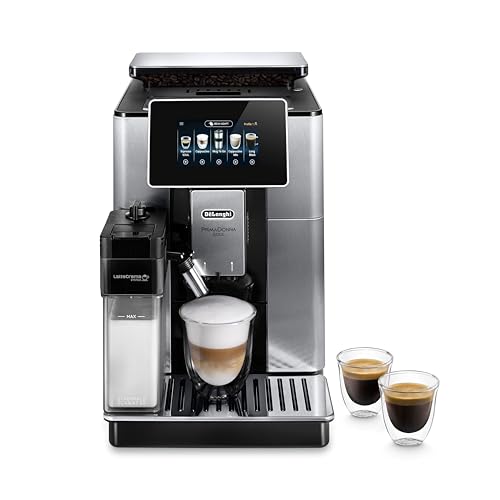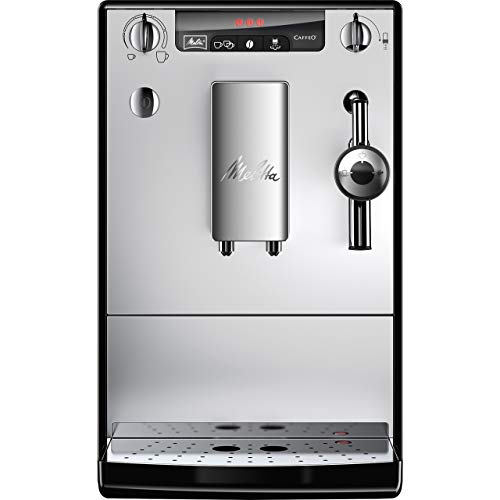17 Reasons Not To Not Ignore Coffee Machine Coffee Beans
페이지 정보

본문
 Choosing the Right Coffee Beans For Your Coffee Machine
Choosing the Right Coffee Beans For Your Coffee MachineUsing the right coffee beans can have an enormous impact on your cup of coffee. This is particularly true for machines that use beans-to-cup technology.
They have a hopper that is filled with beans. They then automatically grind them to the right size for extraction. They also have a chamber that holds hot boiling water for brewing.
Consistency
Bean-to-cup machines are excellent for making coffee. They can be used with correct coffee beans to produce a delicious cup of coffee each time. To ensure that your coffee is delicious you should select the right beans and roast. It is also important to determine the best grind size for your brew method. The size of the grind is vital as it determines the speed at which water will flow through it and how much flavor extraction occurs. It is also important to choose a top-quality grinder that will result in an even grind that is suitable to your specific brewing process.
It is recommended to use medium-coarse machine beans for all brewing methods, as this grind size is most effective at ensuring even extraction and an even flavor profile. It is essential to avoid using dark roast beans in a bean-to cup machine, as they tend to be oily and could cause a blockage in the burrs of your grinder. This could lead to an accumulation of coffee oils, which will cause a bitter cup of coffee.
A variety of factors can affect the quality of coffee beans, including the storage and grinding. If beans are stored too long they lose their moisture content as well as the scents that make them delicious. It is essential to buy freshly roasted coffee beans for your commercial machine. It is also recommended to select a medium or dark roast, as they are more suitable for beans-to-cup machines.
The right beans for your machine will be determined by your personal preferences and tastes. Some people prefer to use 100 percent Arabica beans, while others may prefer mixing both types of beans. There are a variety of roast levels to choose from, ranging from light to dark. Some roasts are better suited for certain brewing methods, while others can be used with any type of coffee maker.
The consistency of the grind is an additional factor that can affect the taste of your coffee. A finer grind allows water to pass through it faster however it can also extract too much flavor. This is known as over-extraction. The shape and size of the coffee particles are crucial. If they're of different sizes and shapes, it can affect the way water moves through the ground. This can cause some areas to be excessively extracted.
Cost-effectiveness
A coffee maker of your own may seem like a big cost however in the long run, it is more affordable than paying for expensive pods. Moreover, you will have more choices in terms of beans, and won't be restricted by the options that a rental company offers. Additionally, you'll save on maintenance costs and not be concerned about refills or ongoing service contracts.
There are a myriad of coffee machines bean to cup makers available and the one that's best for your office depends on your preferences and priorities. For instance, a bean-to-cup machine will provide you with the most authentic and fresh taste, whereas pod coffee machines offer convenience and a variety of flavors for an affordable cost.
bean to cup coffee machines review-to cup machines are more expensive than pod machines, but can offer many benefits, such as reduced waste and a better cup of coffee. They can be used with different beans which makes them a great alternative for offices that want to accommodate a diverse workforce.
The beans you use will determine the flavor and quality of your coffee. It is recommended to select medium roast beans machines that are roasted sufficiently to produce complex flavors, but not enough that they lose their original characteristics. Also, it is important to make sure that the beans are freshly roast, because stale or old beans can alter the final product.
You can save money by grinding your own beans, however you will need to invest in the right equipment and grinder. It's worth it in the end since you'll be able to alter the grind's size and strength to your preferences and have more control over the brewing process. In addition, you'll be avoiding the toxins and additives that are that are present in commercially manufactured ground coffees. Lastly, you'll be reducing the amount of waste you produce, as pods can be expensive and difficult to recycle because of their plastic and aluminum components.
Variety
There are many kinds of coffee beans, each with a different flavor profile. These can be used in a variety of recipes for drinks and food. Certain beans are roasted darker than others, which may affect the aroma and flavor of your coffee. Certain coffees are roast lighter and can have more fruity or floral flavor.
It can be difficult to pick the right type of bean for your machine. There are a variety of things to take into consideration in addition to origin, processing method and roast color. It is also crucial to select fresh beans that have been roasted recently. Beans that have been roasted for too long could lose their aroma and flavor.
There is no one type of coffee that is better suitable for the bean-to-cup machines. However, there are some that are better suited. For example, dark roasts are ideal for espresso-based drinks, while lighter roasts are more appropriate for filter coffee. In general you should play around with different flavors and types until you find one that suits your taste.
Bean-to-cup coffee makers are convenient and fast. They are also versatile and quick. They can be used to make cappuccino, coffee or latte, as well as other milky caffeinated drinks. They are popular for those who prefer to be hands-free. With a bean-to cup machine, you don't need to fret about pressing a portafilter, squeezing out the cake tray or filling up a water tank. These devices can be purchased from most major retailers and are ideal for home use.
Water and coffee beans are the only two components that are required to make coffee. For a cup that is delicious it is essential to use filtered water and beans of high-quality. The type of beans you select will make a difference in the aroma, flavor and consistency of your coffee.
Apart from making sure the beans are of high-quality, you should also be aware of the roast's color and the aroma. A light roast will have a less pronounced flavor and medium roasts will have a full and balanced taste. Dark-roasted beans are the best bean to cup coffee machine for espresso, while light and medium roasts are best suited to filter coffee machines and bean machines-to cup machines.
De'Longhi coffee bean grinders can be used to make espresso or filter coffee. This bean-to-cup machine will grind whole coffee beans into fine ground and prepare it for brewing in less than one minute. It can also make the perfect cup of cappuccino or chai.
Environment-friendly
Coffee is among the world's most consumed beverages It's therefore crucial to choose sustainable options. When it comes to coffee, sustainability encompasses environmental, social, and economic aspects. When buying coffee beans look out for Fair Trade or UTZ certificates to ensure that farmers are getting an appropriate price for their harvest and aren't using harmful chemicals. These certifications safeguard the environment.
Despite its many advantages coffee is an extremely resource-intensive plant. The process of growing, processing and packaging of coffee bean to cup machines (look at here) beans creates greenhouse gases, deforestation and water pollution. However the use of sustainable coffee beans and brewing methods can help reduce these impacts. Recent life-cycle assessments (LCAs) examined the environmental impacts of different brewing systems. Researchers discovered that the Moka pot, as well as single-serve capsules that have aluminum seals left the most environmental footprints. The first caused the most harm to nonrenewable resources and the latter produced huge amounts of waste.
According to the scientists who conducted the LCA, production and cultivation are the two main factors that impact the environment of a cup of coffee. Coffee cultivation is energy-intensive and requires a lot of fertilizers, pesticides, and machines that emit greenhouse gases. It is also a major contributor to deforestation within the Amazon basin.
In fact, in a study from 2021, it was found that coffee brewed using the least sustainable methods produced as much CO2 as the same amount of cheese, and was only half the amount of the emissions from beef. This was due to intensive irrigation and fertilization and the use of nitrous oxide-emitting pesticides. However, the good news is that if we were to make the switch to sustainable practices, the negative impact will be greatly reduced.
There are a myriad of ways to make your coffee eco-friendly such as using reusable cups and mugs, using an efficient coffee machine, and buying Fair Trade or UTZ certified beans. If you plan to use pods, choose ones that are 100% compostable. You can also buy loose coffee grounds to improve your soil.

- 이전글Guide To Buy 1kg Coffee Beans: The Intermediate Guide In Buy 1kg Coffee Beans 24.09.25
- 다음글New And Innovative Concepts Happening With Window Repairs Maidstone 24.09.25
댓글목록
등록된 댓글이 없습니다.

